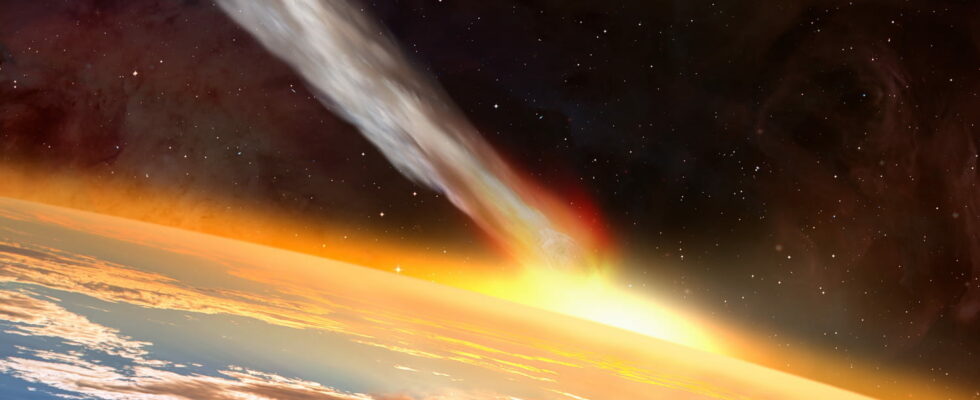Astronomers have recently discovered a large asteroid that may crash on our planet in a few years, causing enormous damage. Scientists are preparing solutions to avoid collision.
We all have disaster movies like Deep Impact Or Armageddon which show the destructive power of asteroids. And everyone knows that it was the fall of a giant meteor that caused the disappearance of dinosaurs some 66 million years ago. Without going to these extremes, a new asteroid discovered at the end of 2024 worries astronomers and scientists. 2024 YR4 – This is his name – could indeed cross the trajectory of the earth in a few years. And even crush there, causing considerable damage.
It is the Atlas telescope, based in Hawaii, which made it possible to identify the asteroid at the end of 2024. Current calculations provided for a potentially very close meeting with the earth on December 22, 2032. If the probability of a direct impact remains Low – approximately 1.3 % – it is however much higher than most celestial objects of this size. It is therefore not surprising that NASA and other space agencies monitor 2024 YR4 closely.
With an estimated diameter between 40 and 100 m, this large rock was classified at level 3 on the Turin scale, a score rarely attributed. This scale, ranging from 0 (no risk) to 10 (certain impact), makes it possible to assess the risks of collision. Level 3 indicates a meeting close enough to deserve increased vigilance, without however ensuring that an impact will occur. The calculations are still likely to change over the observations, and it is likely that this score is decreasing as it has happened in similar cases in the past.
If this asteroid came to collide with the earth, the damage could be considerable, but not cataclysmic. Experts compare this potential event to that of Toungouska, which occurred in Siberia in 1908, where a similar object had razed a forest of more than 2,000 KIM2. 2024 YR4 could cause localized destruction, but not a global disaster. The potential area of current impact would extend from northern South America to Southeast Asia, but these predictions are still very provisional. But we can easily imagine the terrible damage that could cause 2024 YR4 if it fell on a metropolis.
Fortunately, scientists have been working actively for years to develop methods to avoid collisions with asteroids. Among the solutions envisaged, the kinetic impact seems particularly promising. This technique consists in sending a spacecraft hitting the asteroid to modify its trajectory. In 2022, NASA tested this method successfully during the DART mission. Other options, such as controlled explosions or gravitational tractors, are also under study.
For the moment, there is no need to be alarmed. Astronomers closely monitor this asteroid and continue to refine their calculations in the coming years. However, it is reassuring to know that strategies are already in place to deal with such a threat, showing that science is ready to protect the earth if necessary.
